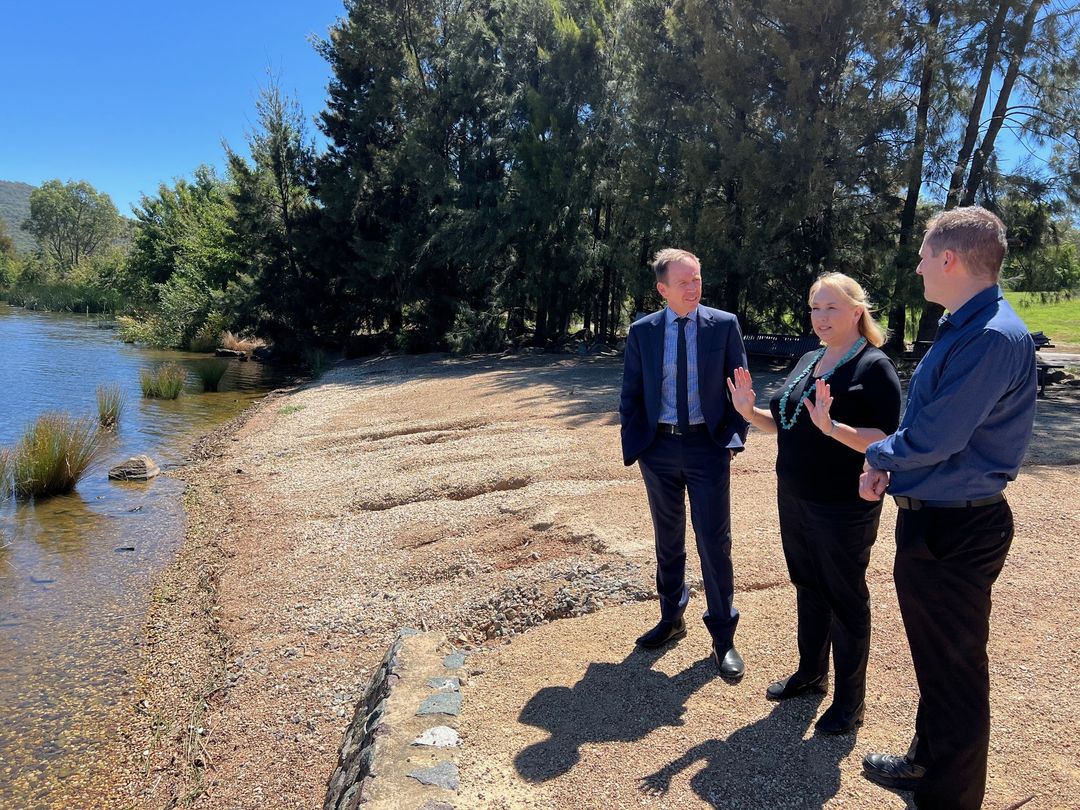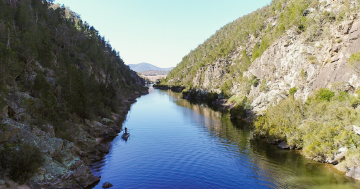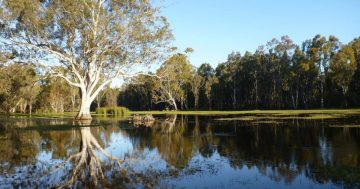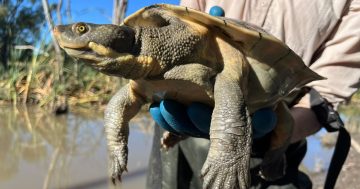
ACT Climate Change and Sustainability Minister Shane Rattenbury (left) said up to 99 per cent of the headwaters from the upper Murrumbidgee River was diverted to the Snowy Hydro scheme each year, upstream of the Territory. A recent survey showed local people want to see the health of the river restored. Photo: Shane Rattenbury MLA/Facebook.
The Federal Government has reached an agreement with the ACT to fulfil its water recovery obligations under the Murray-Darling Basin Plan following years of slow progress.
Co-signed by the Territory, it will bridge the remaining gap towards its Sustainable Diversion Limits (SDL) by recovering 4.9 gigalitres per year (GL/y) of water. This means the Federal Government will have recovered about 31 of the 49.2 GL/y target (60 per cent) across all seven catchments of the Murray-Darling Basin.
ACT Chief Minister Andrew Barr said under this agreement, the Territory would receive $58.8 million to deliver water efficiency and demand management projects that would save a total of 6.36 GL/y.
“Our waterways are not bound by borders; we know that our actions in the ACT will positively contribute towards the health of the river systems across our region and further afield,” Mr Barr said.
“Restoring river flows within the upper Murrumbidgee River catchment supports improved catchment health and water security that is integral for the prosperity of communities in the ACT and surrounding region.”
In November, the Federal Environment Minister Tanya Plibersek was able to pass the Restoring our Rivers Bill after securing the support of 11 Greens senators, along with independent Senators David Pocock (ACT) and David Van (Victoria).
It seeks to accelerate progress on the Murray-Darling Basin Plan following a Productivity Commission report urging participating governments to get it back on track.
The bill is expected to recover much more water for the environment than is currently allocated, including by buying back water licences directly from farmers so that the water can be left to flow down the river rather than being used to irrigate crops.
Last month, the Commonwealth said 26.25 GL/y of water was expected to be recovered through the voluntary water purchase tender. It believes it will bridge the gap for three of the six catchments within NSW and southern Queensland.
However, before its passing, the controversial bill sparked mass protests in the NSW towns of Griffith, Leeton and Deniliquin. Speakers argued it would have a devastating impact on the population, economies and living standards of these towns.
“The Griffith Business Chamber is dismayed by today’s [29 November] announcement,” the peak body’s president John Nikolic said.
“Senator Pocock previously stated that there is no civilisation without agriculture.
“The business chamber has repeatedly lobbied for the implementation and delivery of water sustainability projects, which the Commonwealth and states have failed to deliver over the past 10 years.
“Those sustainability projects are the appropriate mechanism by which to ensure the future of the Murray-Darling Basin and all of its uses.”
Peak environmental body the Nature Conservation Council expressed strong support for the law, arguing claims about buybacks’ negative impacts on rural communities were overblown.
Despite the kerfuffle, Minister Plibersek promised water buybacks would be a last resort for water recovery under the plan. Hence the $58.8 million injection into the ACT’s delivery of water efficiency and demand management projects, along with an additional $115 million allocated to five water-saving projects in NSW last month.
The Environment Minister also lauded Queensland’s Mareeba Dimbulah irrigation efficiency project, which was jointly funded by the state ($20.94 million) and federal ($11.6 million) governments. According to recent assessments, it will exceed its original target of 8.3GL/y, with up to 11.5GL expected to be conserved annually.
Most recently, the Federal Government opened consultation on a new National Water Agreement, which seeks to close its current gaps and complement the Murray-Darling Basin Plan effort.
Public consultation will remain open until 3 May.






